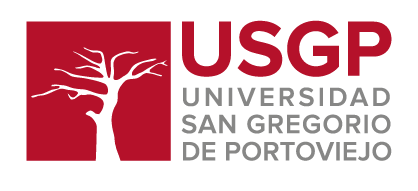Developing a Green Corporate Image: An Achievement for Competitive Advantage through Organizational Culture and Green Marketing Strategy
Palabras clave:
green corporate image, green marketing, competitive advantage, organizational culture, indonesiaResumen
This study aims to provide an analysis on the development of green marketing strategy and its relationship towards organizational culture and competitive advantage. An insight into the importance of green corporate image, green marketing strategy and their effect on the company's competitive advantage will also be investigated. Nowadays, society desires business corporations to contribute more on green issues and offer solutions on the environmental problems facing by local community. Previous studies have found that business corporations that able to integrate strategic action between economic objective and green/environmental friendly action will survive and gain competitive advantage. Self-administered survey questionnaires were distributed to employees in manufacturing and service industry. Then, statistical analyses were carried out to answer research objectives of this study. The results indicate that green marketing strategy and organizational culture give a positive green corporate image and create greater competitive advantage in the industry.
Descargas
Referencias
Jesús, H.M., Manuel L.J., Isabel M. C., Domingo M.M. 2016. Relationship between corporate social responsibility and competitive performance in Spanish SMEs: Empirical evidence from a stakeholders’ perspective. BRQ Business Research Quarterly 19: 55-72.
Polonsky, M., & Ottman, J. 1998. Exploratory examination of whether marketers include stakeholders in the green new product development process. Journal of Cleaner Production, 6(3): 269-75.
Ottman, J. A, et al. 2006. “Green Marketing: Challenges and Opportunities for The New Marketing Age”. NTC Business Books, Lincolnwood.
Chen, Y.-S. 2008. The positive effect of green intellectual capital on competitive advantages of firms. Journal of Business Ethics, 77(3): 271-286.
Awatara, I.G.P.D., & Wahjudin, I.H., 2010. The impact of the environment organizational culture and environmental leadership toward competitive advantage green with green organization's identity as an intervening variable. Ekosains, 2(3): 1-13.
Ruiz-Jiménez, J. M., & Fuentes-Fuentes, M. del M. (2016). Management capabilities, innovation, and gender diversity in the top management team: An empirical analysis in technology-based SMEs. BRQ Business Research Quarterly, 19(2), 107-121.
O’Riordan, T., & Jordan, A. 1999. Institutions, Climate Change and Cultural Theory: Towards a Common Analytical Framework, 9: 81-93.
Smith, J.B., & Lenhart, S.S., 1996. Climate Change Adaptation Policy Options, Climate Research, 6: 193-201.
Lee, K. H. 2009. Why and how to adopt green management into business organizations: The case study of Korean SMEs in manufacturing industry. Management Decision, 47(7): 1101-1121.
Davies, A., Lee, Z., & Ahonkhai, I. 2011. Do consumers care about ethical-luxury? Journal of Business Ethics, 106: 37-51.
Foreman, P., & Whetten. D.A. 2002. Members identiication with multiple identity organization. Organization Science, 13(6): 618-635.
Waldman, D., Siegel, D., & Javidan, M., 2004. CEO transformational leadership and corporate social responsibility. Working paper. Resselaer Polytechnic Institute. New York.
Prakash, A. 2002. Green marketing, public policy and managerial strategies. Business Strategy and the Environment Bus. Strat. Env. 11: 285-297.
Kotler, P., & Keller, K.L. 2012. Marketing Management, 14th Global Edition, Prentice Hall International, Inc., USA.
Chitakornkijsil, P. 2012. Moral meaning in green marketing and socially responsible marketing. The International Journal of Organizational Innovation, 4(3).
Haryadi, R. 2009. Influence of green marketing strategy approach toward consumer choice marketing mix (case study on the Body Shop Jakarta), Master of Management Graduate Program, University of Diponegoro Semarang.
Rezai, G., Teng, P.K., Mohamed, Z., & Shamsudin, M.N. 2013. Consumer willingness to pay for green food in Malaysia. Journal of International Food & Agribusiness Marketing, 25[1]. DOI:10.1080/ 08974438.2013.798754.
Hardeep, C., Ramesh. D., & Swati. R. 2014. Conceptualisation, development and validation of green marketing orientation (GMO) of SMEs in India. Journal of Global Responsibility, 5(2): 312-337.
Tan, B.C. 2011. The roles of knowledge, threat, and PCE on green purchase behavior. International Journal Of Business And Management, 6(12): 14-27.
Sharma, Y., 2011. Changing consumer behaviour with respect to green marketing – a case study of consumer durables and retailing. Zenith International Journal of Multidisciplinary Research, 1(4).
Hamid, S.A.R., Ghafoor, H.A., & Shah, T.Z., 2012. Analysis of attitude towards green purchase: Pakistan in context. International Journal of Business and Social Science, 3(6).
Sharma, S.C., & Bagori, H., 2012. Green marketing: a gimmick or the real deal? International Journal of Research in Finance & Marketing, 2(2).
Fabrice. L., Florence, B.M., & Renaudin V., 2011. Why might organic labels fail to influence consumer choices? marginal labelling and brand equity effects. Journal Consumer Policy, 35, 85–104.
Francisco, V.M., & Jaime, E.S.P., 2016. Sustainability, innovative orientation and export performance of manufacturing SMEs: An empirical analysis of the mediating role of corporate image. Journal of Industrial Engineering and Management, 9(1): 35-58.
Subrat, S. & Suvendu, K.P., 2015. Strategic CSR, Corporate identity, branding and marketing: review & comments. Review Integrated Business. Econ. Res. 4(3), 121-140.
Isabel B., Sara C., & Eva M., 2016. The importance of corporate brand identity in business management: An application to the UK banking sector, BRQ Business Research Quarterly, 19, 3-12.
Do Paço, A., & Raposo, M. (2009). Green segmentation: an application to the Portuguese consumer market. Marketing Intelligence & Planning Journal, 27(3) 364-379.
Yazdanifard, R., Erdoo, M.I., 2011. The impact of green marketing on customer satisfaction and environmental safety. International Conference on Computer Communication and Management, Proc. of CSIT, vol.5, IACSIT Press, Singapore.
Wei, C. F., et al., 2012. Green marketing: the roles of appeal type and price level. Asian Social Science, 8(12).
Chen, Y.-S. 2009. The drivers of green brand equity: Green brand image, green satisfaction, and green trust. Journal of Business Ethics, 93(2): 307-319.
Othman. C., & Rahman, M.S., 2014. Investigation of the relationship of brand personality, subjective norm and perceived control on consumers’ purchase intention of organic fast food. Modern Applied Science, 8(3).
Rajput, N., Kaura, R., & Khanna, A., 2013. Indian banking sector towards a sustainable growth: a paradigm shift. International Journal of Academic Research in Business and Social Sciences, 3(1).
Chow, W.S., & Chen, Y., 2012. Corporate sustainable development: testing a new scale based on the mainland Chinese context. Journal Business Ethics,105: 519-533.
Mei, O.J., Ling, K.C., & Piew, T.H., 2012. The antecedents of green purchase intention among Malaysian consumers. Asian Social Science, 8(13).
Cherian, J., & Jolly, J., 2012. Green marketing: a study of consumers’ attitude towards environment friendly products. Asian Social Science, 8(12).
Valerie, L.V., 2009. B2B green marketing and innovation theory for competitive advantage. Journal of Systems and Information Technology, 11(4): 315-330.
Fraj-Andrés, E., Martinez-Salinas, E., & Matu: 263-286.
Ravindra, P.S., & Pradeep, K.K., 2012. Greening of industries for sustainable growth An exploratory study on durable, non-durable and services industries. International Journal of Social Economics, 39(8): 551-586.
Ching, H.C., 2011. The influence of corporate environmental ethics on competitive advantage: The mediation role of green innovation. Journal of Business Ethics, 104: 361-370.
Ringle, C.M.,Wende, S. & Will, A. 2005. SmartPLS (Version 2.0 Beta). University of Hamburg, Hamburg.
Oertwig, N., Galeitzke, M., Schmieg, H.-G., Kohl, H., Jochem, R., Orth, R., & Knothe, T. 2017. Integration of sustainability into the corporate strategy. Sustainable Production, Life Cycle Engineering and Management, 175200.
Madueño, J. H., Jorge, M. L., Conesa, I. M., & Martínez-Martínez, D. 2016. Relationship between corporate social responsibility and competitive performance in Spanish SMEs: Empirical evidence from a stakeholders’ perspective. BRQ Business Research Quarterly, 19(1): 55–72.



















